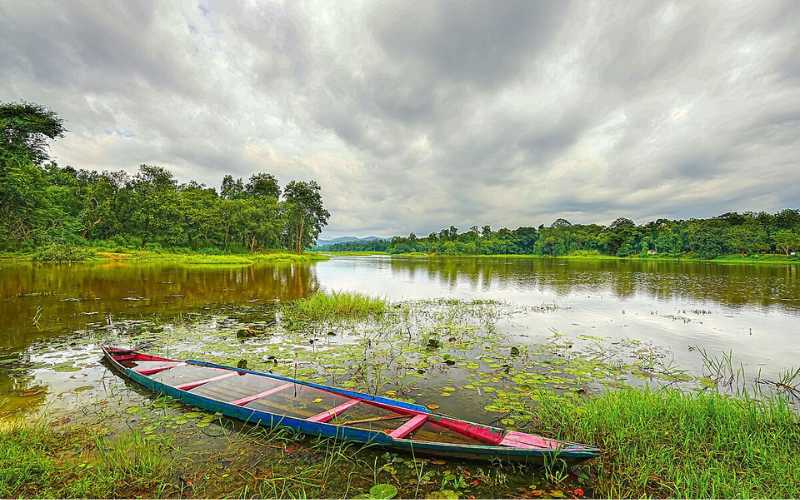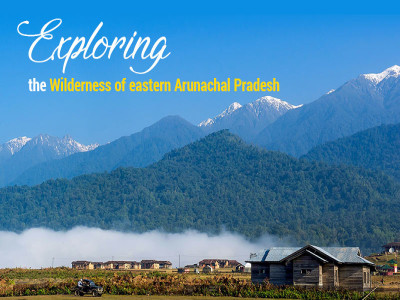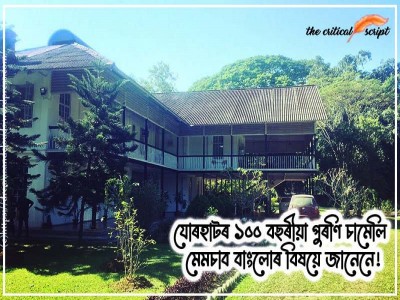
Chandubi Lake: A Biodiversity Hotspot
Chandubi Lake, a picturesque natural water body in the Kamrup district of Assam, was formed through a catastrophic event—the Assam earthquake of 1897. This earthquake, which occurred on June 12, 1897, was one of the most powerful seismic events in the region's history. It had a magnitude estimated between 8.0 and 8.7 on the Richter scale and caused widespread destruction across Assam and neighboring areas.
The earthquake
resulted in the formation of Chandubi Lake due to landslides and consequent
blockages in the path of the water flow. The natural topography of the area,
coupled with the seismic activity, led to the creation of a dam-like structure,
obstructing the flow of water and forming the lake. Over time, rainwater and
runoff from surrounding hills further contributed to the filling of the lake,
creating the expansive water body that exists today. As a result, Chandubi Lake
stands as a testament to the geological forces that shape the landscape of the
region.
Chandubi Lake is located approximately 64 kilometers (about 40 miles) away from Guwahati, the capital city of Assam, India. The lake is situated in the Kamrup district, and traveling from Guwahati to Chandubi Lake typically takes around 2 to 2.5 hours by road, depending on the mode of transportation and traffic conditions.
The Mishing tribe is one of the indigenous communities residing near Chandubi Lake in Assam, India. The Mishings, also known as the Miris, are primarily found in the Brahmaputra Valley of Assam, with significant populations inhabiting areas surrounding the lake, particularly in the Kamrup district. The Mishings have their unique language, culture, and traditions, and they primarily rely on agriculture, fishing, and weaving for their livelihoods. They have a deep connection to the land and water bodies in their region, including Chandubi Lake, which holds cultural significance for them.
Visitors to Chandubi
Lake may have the opportunity to interact with members of the Mishing tribe and
learn about their way of life, traditional practices, and rich cultural
heritage. It also holds cultural significance for the local indigenous
communities, who consider it sacred. Every year, during the traditional Bihu
festival, the lake attracts a large number of devotees who come to offer
prayers and seek blessings.
The lake is a popular destination for nature lovers, bird watchers, and anglers, as it is home to various species of birds and fish. Visitors can indulge in activities like boating, fishing, and picnicking while enjoying the scenic beauty of the surroundings.
The area surrounding Chandubi Lake in Assam, India, is teeming with diverse wildlife, offering nature enthusiasts a rich tapestry of fauna to discover. Among the notable animals found in the region are various species of mammals, birds, reptiles, and amphibians. In the lush forests surrounding the lake, visitors may encounter mammals such as Indian elephants, wild boars, barking deer, sambar deer, and civets. The dense vegetation provides an ideal habitat for these creatures, offering ample food and shelter.
Birdwatchers will
delight in the avian diversity of the area, with sightings of colorful species
such as the Indian pied hornbill, Asian paradise flycatcher, white-throated
kingfisher, and various species of eagles, owls, and waterfowl. The lake itself
attracts numerous migratory birds during the winter months, adding to the
birdwatching experience.
Reptiles and
amphibians also thrive in the wetland habitats surrounding Chandubi Lake.
Visitors may spot species such as Indian pythons, king cobras, monitor lizards,
turtles, and various frogs and toads. These freshwater fish are prized for
their taste and are often sought after by local fishermen and visitors alike.
Additionally, Chandubi Lake is known to host indigenous fish species native to
the region, such as the Assamese flying barb (Esomus danricus) and the Assamese
loach (Neomacheilus triangularis), adding to the ecological diversity of the
lake.
Disclaimer: The opinions expressed in this article are those of the author's. They do not purport to reflect the opinions or views of The Critical Script or its editor.

Newsletter!!!
Subscribe to our weekly Newsletter and stay tuned.

















Related Comments